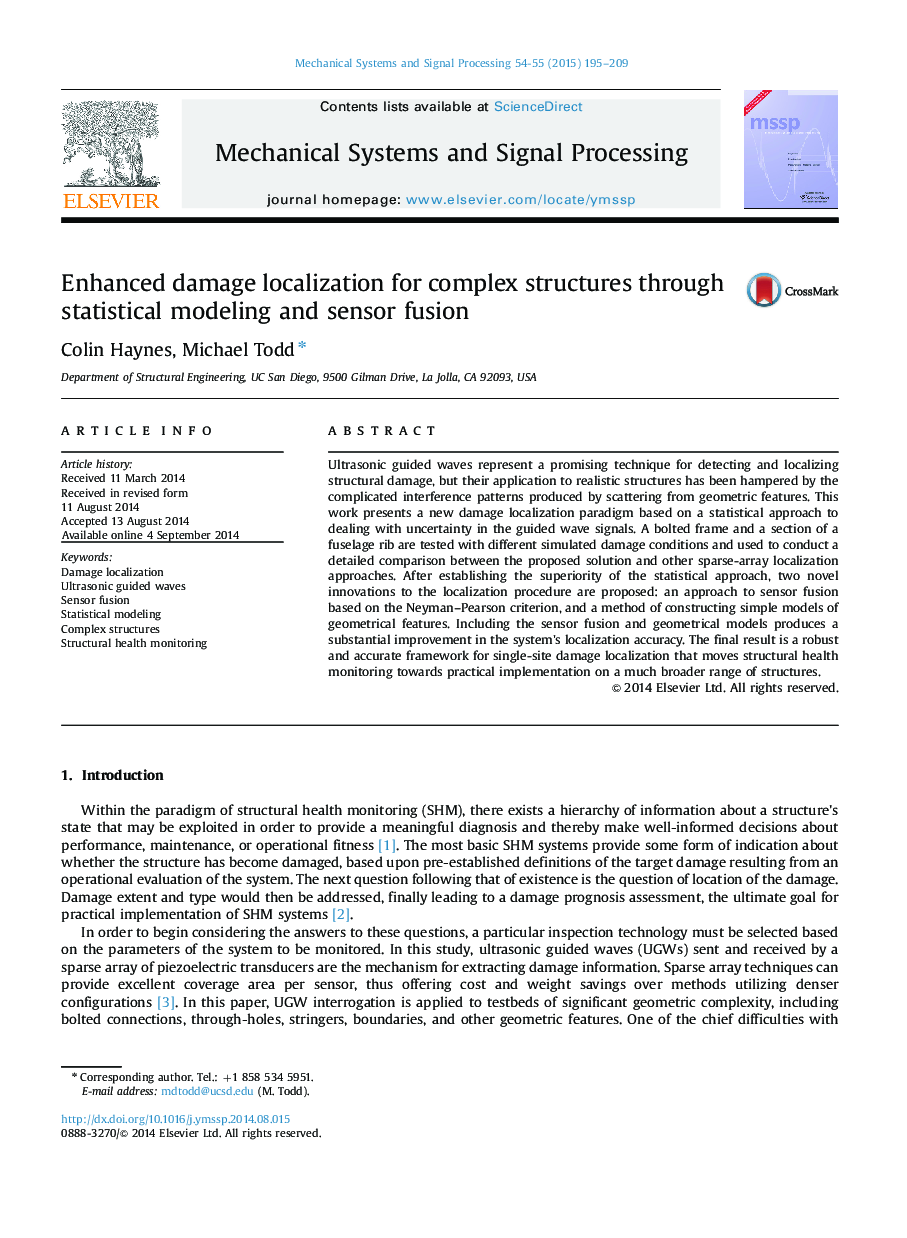| Article ID | Journal | Published Year | Pages | File Type |
|---|---|---|---|---|
| 559335 | Mechanical Systems and Signal Processing | 2015 | 15 Pages |
•A new damage localization approach based on maximum likelihood estimations is developed specifically for complex structures with single-site damage.•Statistical first-arrival estimation approach outperforms other methods.•A novel sensor fusion approach is proposed and evaluated.•It is shown that low-order, simple geometrical modeling is the primary driver in improving localization accuracy.
Ultrasonic guided waves represent a promising technique for detecting and localizing structural damage, but their application to realistic structures has been hampered by the complicated interference patterns produced by scattering from geometric features. This work presents a new damage localization paradigm based on a statistical approach to dealing with uncertainty in the guided wave signals. A bolted frame and a section of a fuselage rib are tested with different simulated damage conditions and used to conduct a detailed comparison between the proposed solution and other sparse-array localization approaches. After establishing the superiority of the statistical approach, two novel innovations to the localization procedure are proposed: an approach to sensor fusion based on the Neyman–Pearson criterion, and a method of constructing simple models of geometrical features. Including the sensor fusion and geometrical models produces a substantial improvement in the system׳s localization accuracy. The final result is a robust and accurate framework for single-site damage localization that moves structural health monitoring towards practical implementation on a much broader range of structures.
